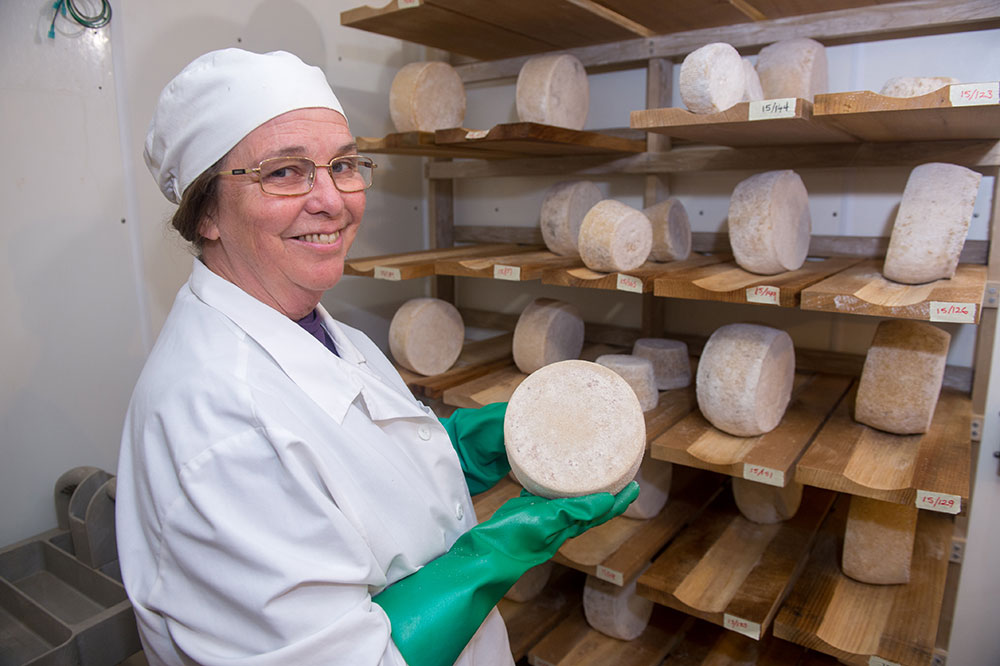The Very Best of Melbourne Made Cheese: Floridia Cheese Melbourne's Distinct Offerings
The Very Best of Melbourne Made Cheese: Floridia Cheese Melbourne's Distinct Offerings
Blog Article
Unlocking the Tricks of Artisanal Cheese Making: A Detailed DIY Guide
In the world of cooking craftsmanship, artisanal cheese making stands as a testimony to the fragile balance between custom and innovation. Each step in the procedure, from picking the best milk to improving aging strategies, holds within it a wealth of understanding gave via generations. As we embark on this journey to demystify the art of producing exquisite cheeses, we are faced with a tapestry of keys and abilities waiting to be unraveled. Join us as we explore the complexities of this old craft, where scientific research, art, and perseverance merge to generate tastes that entice the detects.
Picking the Right Milk
When beginning on the journey of artisanal cheese production, the option of milk plays a crucial duty in figuring out the quality and features of the final item. The type of milk picked influences the flavor, appearance, and generally profile of the cheese.
When choosing milk for cheese making, it is essential to consider the fat web content. Greater fat web content in milk can lead to a creamier and richer cheese, while reduced fat material might result in a drier and stronger texture. Furthermore, the resource of the milk, whether from cows, goats, sheep, or buffalo, adds distinct tastes and characteristics to celebrity (Melbourne Made Cheese). Each type of milk brings its own nuances, permitting a wide variety of cheese varieties to be crafted based on the picked milk. Inevitably, the choice of milk is a basic choice that sets the foundation for a successful artisanal cheese-making undertaking.
Culturing and Coagulating
To start the cheese-making procedure, the crucial steps of culturing and coagulating should be very carefully implemented to change milk into curds and whey. Culturing involves introducing advantageous germs to the milk, which then begins the fermentation process. These germs convert lactose (milk sugar) into lactic acid, producing the acidic atmosphere required for coagulation. The sort of culture used can dramatically influence the taste, appearance, and ripening of the last cheese item.

The timing and temperature control throughout culturing and coagulation are important variables that affect the last result of the cheese. Correct execution of these actions is necessary to guarantee the wanted texture, flavor, and consistency of the artisanal cheese being generated.
Draining Pipes and Pushing Curds
After the milk proteins have actually coagulated and the curds have been reduced to release whey, the following critical action in artisanal cheese making involves draining and pressing the curds to accomplish the desired structure and consistency of the final cheese product. Draining pipes is the process of dividing the curds from the whey. This can be done by transferring the curds right into a cheesecloth-lined bowl-shaped sieve or mold and permitting the whey to drain off normally. The moment for draining can differ depending on the kind of cheese being made and the wanted wetness content.
Once the curds have completely drained pipes, the next step is pressing. Pressing aids eliminate any remaining whey and compacts the curds to develop a strong cheese wheel. Pushing can be done making use of specialized cheese presses that apply constant and mild stress over a time period. The period and stress used during pressing will influence the final structure of the cheese, from luscious and soft to tough and company. Correct pushing and draining pipes are essential steps that considerably affect the high quality and attributes of the artisanal cheese being generated.
Aging and Flavor Methods
Executing precise aging and flavoring techniques is crucial in boosting the deepness and complexity of artisanal cheeses, elevating their preference accounts to charming degrees of refinement and sophistication. Aging plays an essential duty in creating the special flavors and textures that identify artisanal cheeses. During the aging process, cheeses are saved in meticulously managed environments where factors such as temperature level, airflow, and moisture are controlled to encourage the development of advantageous mold and mildews and germs. This regulated atmosphere permits the cheese to mature slowly, developing rich tastes and complicated fragrances.
Flavoring methods likewise add considerably to the last preference of artisanal cheeses. Cheesemakers might choose to present added flavors by incorporating components such as natural herbs, spices, or perhaps fruits right into celebrity throughout the production process. Furthermore, some cheeses are cleaned or scrubed with different fluids, such as salt water or alcohol, to boost their structures and tastes.
Wrapping and Storing Cheeses

Conclusion
In verdict, mastering the art of artisanal cheese making involves very carefully picking the right milk, following exact culturing and coagulating procedures, draining pipes and pressing curds successfully, and making use of numerous aging and flavor techniques. Remember to wrap and keep your cheeses appropriately to make certain optimum flavor and texture development.
Each type of milk brings its own nuances, allowing for a broad variety of cheese ranges to be crafted based on the selected milk.After the milk proteins have coagulated and the curds have been cut to release whey, the following vital action in artisanal cheese making involves draining and pushing the curds to accomplish the wanted structure and consistency of the final cheese product. The majority of cheeses must be covered in wax paper or cheese paper to enable them to take a breath while safeguarding them from drying out. For cheeses that require to proceed aging, such as bloomy skins or cleaned peels, ensure they are kept in a trendy atmosphere like a cheese cavern or a refrigerator set to the appropriate temperature. By paying focus to check these guys out the covering and storage of artisanal cheeses, cheese makers and fanatics can maintain the stability of these delicacies and fully appreciate their complicated flavors.
Report this page